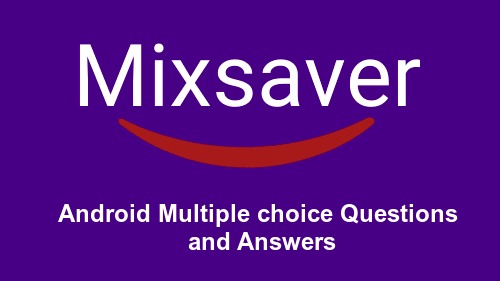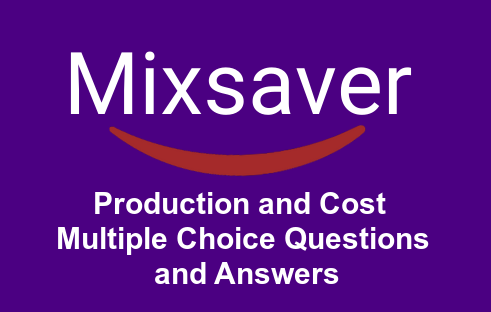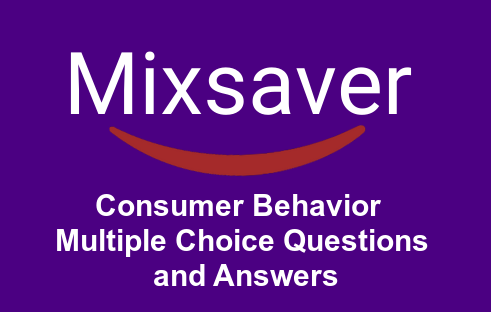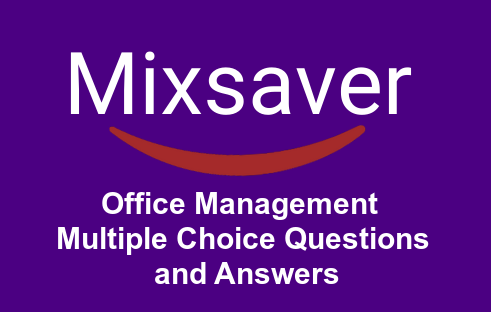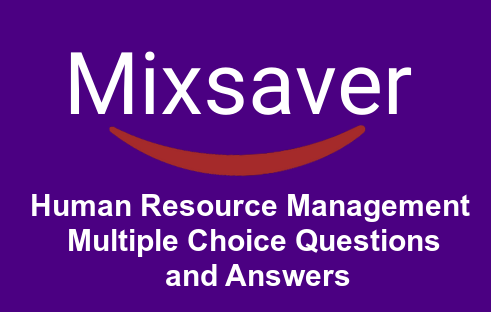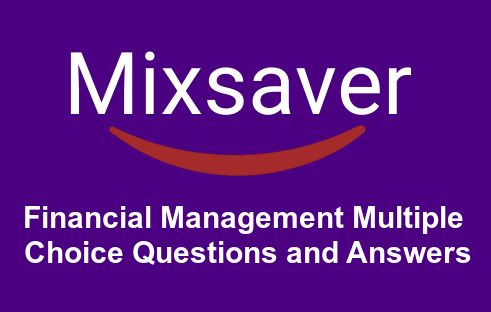1) Android is licensed under which is open source licensing license?
A. Gnu's GPL
B. Apache/MIT
C. OSS
D. Sourceforge
Ans: B
2) Although most people's first thought when they think of Android is Google, Android is not actually owned by Google. Who owns the Android platform?
A. Oracle Technology
B. Dalvik
C. Open Handset Alliance
D. The above statement is and Android is owned by Google
Ans: C
3) As an Android programmer, what version of Android should you use as your minimum development target?
A. Versions 1.6 or 2.0
B. Versions 1.0 or 1.1
C. Versions 1.2 or 1.3
D. Versions 2.3 or 3.0
Ans: A
4) What was Google's main business motivation for supporting Android?
A. To level the playing field for mobile devices
B. To directly compete with the iPhone
C. To corner the mobile device application market for licensing purposes
D. To allow them to advertise more
Ans: D
5) What was the first phone released that ran the Android OS?
A. Google gPhone
B. T-Mobile G1
C. Motorola Droid
D. HTC Hero
Ans: B
6) From a phone manufacturer's point of view, what makes Android so great?
A. Aside from some specific drivers, it provides everything to make a phone work
B. It makes the hardware work better
C. It allows them to compete with Apple's iPhone
D. It allows users to create apps, generating revenue for the companies
Ans: A
7) What is a funny fact about the start of Android?
A. It was orginaly going to be called UFO
B. The first version of Android was released without an actual phone on the market
C. Androids main purpose was to unlock your car door when you left the keys inside of it.
D. Was going to be a closed source application to make more money for its company.
Ans: B
8) What year was the Open Handset Alliance announced?
A. 2005
B. 2006
C. 2007
D. 2008
Ans: C
9) A device with Android installed is needed to develop apps for Android.
A. True
B. False
Ans: B
10) Android tries hard to __________ low-level components, such as the software stack, with interfaces so that vendor-specific code can be managed easily.
A. confound
B. absract
C. modularize
D. compound
Ans: B
11) Google licensed some proprietary apps.
A. True
B. False
Ans: A
12) What part of the Android platform is open source?
A. low-level Linux modules
B. all of these answers #The entire stack is an open source platform
C. native libraries
D. application frame work
E. complete applications
Ans: B
13) When did Google purchase Android?
A. 2007
B. 2005
C. 2008
D. 2010
Ans: B
14) Android releases since 1.5 have been given nicknames derived how?
A. Adjective and strange animal
B. Food
C. Something that starts w/ 'A' -> Something that starts w/ 'B'...
D. American states
Ans: B
15) Which one is not a nickname of a version of Andriod?
A. cupcake
B. Gingerbread
C. Honeycomb
D. Muffin
Ans: D
16) Android doesn't make any assumptions about a device's screen size, resolution, or chipset.:
A. True
B. False
Ans: A
17) Why are the so few users left with versions 1.0 and 1.1?
A. The first phones were released with version 1.5
B. 1.0 and 1.1 had security holes that forced carriers to recall phones using them
C. 1.0 and 1.1 are just number designations for the version Apple's iPhone is running
D. Everyone with 1.0 and 1.1 were upgraded to 1.5 over the air automatically
Ans: D
18) Which Android version had the greatest share of the market as of January 2011?
A. 1.1
B. 1.5
C. 2.3
D. 3.4
Ans: B
19) Which piece of code used in Android is not open source?
A. Keypad driver
B. WiFi? driver
C. Audio driver
D. Power management
Ans: B
20) Android is built upon the Java Micro Edition (J2ME) version of Java.
A. True
B. False
Ans: B
Also Read Android Interview Questions & Answers
21) Which among these are NOT a part of Android's native libraries?
A. Webkit
B. Dalvik
C. OpenGL
D. SQLite
Ans: B
22) Android is based on Linux for the following reason.
A. Security
B. Portability
C. Networking
D. All of these
Ans: D
23) What operating system is used as the base of the Android stack?
A. Linux
B. Windows
C. Java
D. XML
Ans: A
24) What year was development on the Dalvik virtual machine started?
A. 2003
B. 2005
C. 2007
D. 2006
Ans: B
25) What is a key difference with the distribution of apps for Android based devices than other mobile device platform applications?
A. Applications are distributed by Apple App Store only
B. Applications are distributed by multiple vendors with different policies on applications.
C. Applications are distributed by multiple vendors with the exact same policies on applications.
D. Applications are distributed by the Android Market only.
Ans: B
26) When developing for the Android OS, Java byte code is compiled into what?
A. Java source code
B. Dalvik application code
C. Dalvik byte code
D. C source code
Ans: C
27) What does the .apk extension stand for?
A. Application Package
B. Application Program Kit
C. Android Proprietary Kit
D. Android Package
Ans: A
28) When you distribute your application commercially,you'll want to sign it with your own key.
A. True
B. False
Ans: A
29) How does Google check for malicious software in the Android Market?
A. Every new app is scanned by a virus scanner
B. Users report malicious software to Google
C. Google employees verify each new app
D. A seperate company monitors the Android Market for Google
Ans: B
30) Which of these are not one of the three main components of the APK?
A. Dalvik Executable
B. Resources
C. Native Libraries
D. Webkit
Ans: D
31) What is the name of the program that converts Java byte code into Dalvik byte code?
A. Android Interpretive Compiler (AIC)
B. Dalvik Converter
C. Dex compiler
D. Mobile Interpretive Compiler (MIC)
Ans: C
32) What was the main reason for replacing the Java VM with the Dalvik VM when the project began?
A. There was not enough memory capability
B. Java virtual machine was not free
C. Java VM was too complicated to configure
D. Java VM ran too slow
Ans: B
33) Android Applications must be signed.
A. After they are installed
B. Before they are installed
C. Never
D. Within two weeks of installation
Ans: B
34) Which of the following are not a component of an APK file?
A. Resources
B. All of these are components of the APK
C. Native Libraries
D. Dalvik executable
Ans: B
35) The AWT and Swing libraries have been removed from the Android library set.
A. True
B. False
Ans: A
36) The R.java file is where you edit the resources for your project.
A. True
B. False
Ans: B
37) What is contained within the manifest xml file?
A. The permissions the app requires
B. The list of strings used in the app
C. The source code
D. All other choices
Ans: A
38) What is contained within the Layout xml file?
A. Orientations and layouts that specify what the display looks like.
B. The permissions required by the app.
C. The strings used in the app.
D. The code which is compiled to run the app.
Ans: A
39) The emulated device for android.
A. Runs the same code base as the actual device, all the way down to the machine layer.
B. Is more of a simulator, and acts as a virtual machine for the Android device.
C. Runs the same code base as the actual device, however at a higher level.
D. An imaginary machine built on the hopes and dreams of baby elephants.
Ans: A
40) Your Java source code is what is directly run on the Android device.
A. True
B. False
Ans: B
41) The Emulator is identical to running a real phone EXCEPT when emulating/simulating what?
A. Telephony
B. Applications
C. Sensors
D. The emulator can emulate/simulate all aspects of a smart phone.
Ans: C
42) How is a simulator different from an emulator?
A. Emulators are only used to play old SNES games, simulators are used for software development
B. The emulator is shipped with the Android SDK and third party simulators are not
C. The emulator can virtualize sensors and other hardware features, while the simulator cannot
D. The emulator imitates the machine executing the binary code, rather than simulating the behavior of the code at a higher level.
Ans: D
43) The R file is a(an) generated file
A. Automatically
B. Manually
C. Emulated
D. None of the above
Ans: A
44) An activity can be thought of as corresponding to what?
A. A Java project
B. A Java class
C. A method call
D. An object field
Ans: B
45) To create an emulator, you need an AVD. What does it stand for?
A. Android Virtual Display
B. Android Virtual Device
C. Active Virtual Device
D. Application Virtual Display
Ans: B
46) The Android SDK ships with an emulator.
A. True
B. False
Ans: A
47) The ________ file specifies the layout of your screen.
A. Layout file
B. Manifest file
C. Strings XML
D. R file
Ans: A
48) The manifest explains what the application consists of and glues everything together.
A. True
B. False
Ans: A
49) The Android Software Development Kit (SDK) is all you need to develop applications for Android.
A. True
B. False
Ans: A
50) What is the driving force behind an Android application and that ultimately gets converted into a Dalvik executable?
A. Java source code.
B. R-file.
C. the emulator.
D. the SDK
Ans: A
51) While developing Android applications, developers can test their apps on.
A. Emulator included in Android SDK
B. Physical Android phone
C. Third-party Emulators (Youwave, etc.)
D. All three options will work.
Ans: D
52) What file is responsible for glueing everthing together , explaining what the applicatin consists of, what its main building blocks are, ext...?
A. Layout file
B. Strings XML
C. R file
D. Manifest file
Ans: D
53) The XML file that contains all the text that your application uses.
A. stack.xml
B. text.xml
C. strings.xml
D. string.java
Ans: C
54) Which of the following is the most "resource hungry" part of dealing with Activities on Android.
A. Closing an app
B. Suspending an app
C. Opening a new app
D. Restoring the most recent app
Ans: C
55) What runs in the background and doesn't have any UI components?
A. Intents
B. Content Providers
C. Services
D. Applications
Ans: C
56) What is an Activity?
A. A single screen the user sees on the device at one time
B. A message sent among the major building blocks
C. A component that runs in the background without any interface.
D. Context referring to the application environment.
Ans: A
57) When an activity doesn't exist in memory it is in.
A. Starting state
B. Running state
C. Loading state
D. Inexistent state.
Ans: A
58) Which of the following is NOT a state in the lifecycle of a service?
A. Starting
B. Running
C. Destroyed
D. Paused
Ans: D
59) There is no guarantee that an activity will be stopped prior to being destroyed.
A. True
B. False
Ans: A
60) Intents
A. are messages that are sent among major building blocks
B. trigger activities to being, services to start or stop, or broadcast
C. are asynchronous
D. all of these
Ans: D
61) In an explicit intent, the sender specifies the type of receiver.
A. True
B. False
Ans: B
62) an implicit intent is the sender specifies the type of receiver?
A. True
B. False
Ans: A
63) When the activity is not in focus, but still visible on the screen it is in?
A. running state
B. Paused state
C. stopped state
D. destroyed state
Ans: B
64) An activity in a stopped state is doing nothing.
A. True
B. False
Ans: B
65) Application contexts are independent of the activity life cycle.
A. True
B. False
Ans: A
66) Services have any user interface components
A. True
B. False
Ans: B
67) Broadcast receivers are Android’s implementation of a system-wide publish/subscribe mechanism, or more precisely, what design pattern?
A. Observer
B. Facade
C. Mediator
D. Command
Ans: A
68) There can be only one running activity at a given time.
A. True
B. False
Ans: A
69) YAMBA stands for Yet Another Mobile Banking App.
A. True
B. False
Ans: B
70) Lists and adapters are more organizational aids than user interface elements in Android.
A. True
B. False
Ans: A
71) What built-in database is Android shipped with?
A. SQLite
B. Apache
C. MySQL
D. Oracle
Ans: A
72) Creating a UI (User Interface) in Android requires careful use of...
A. Java and SQL
B. XML and Java
C. XML and C++
D. Dreamweaver
Ans: B
73) A good example app should demonstrate most of the aspects of the application framework that are unique to Android.
A. True
B. False
Ans: A
74) What will services be used for in the Yamba project?
A. Recompile the source code
B. It will update tweets periodically in the background
C. The services will pause the app
D. Configures the user interface
Ans: B
75) Which answer is not part of the design philosophy talked about in chapter five?
A. Always whole and complete
B. Small increments
C. Lagre increments
D. Refactoring code
Ans: C
76) App Widgets are can be place on the home screen by the user to check for updates are available?
A. True
B. False
Ans: A
77) The android OS comes with many useful system services, which include processes you can easily ask for things such as your..
A. All of these and more.
B. Location
C. Sensor Readings
D. WiFi? Hot Spots
Ans: A
78) What does the Gargenta mean in his Design Philosophy when he says that the project will, "Always be whole and complete"?
A. He means that when we finish the entire project we will have a working application, even though there will be points along the way when we will stop and the application will not run.
B. He means that the program must always be able to compile.
C. He means that we will work on the program by adding self contained chunks to it so that at every stopping point the application runs as though it were a whole and complete application. Each additional chunk simply adds a new functionality to the application.
D. None of the above
Ans: C
79) An Android application is a loose collection of content providers, activities, broadcast receivers, and services.
A. True
B. False
Ans: A
80) Which of the following is NOT an activity we will be creating for the YAMBA project?
A. Preferences Activity
B. Update Activity
C. Timeline Activity
D. Status Activity
Ans: B
81) The timeline receiver will receive messages from the Android system.
A. True
B. False
Ans: B
82) Status data will be exposed to the rest of the Android system via:
A. Intents
B. A content provider
C. Network receivers
D. Altering permissions
Ans: B
83) If the UI begins to behave sluggishly or crash while making network calls, this is likely due to...
A. Network latency
B. Hardware malfunctions
C. Virus on the Server
D. Activity manager contains too much.
Ans: A
84) How does Gargenta approach the problem of the app acting sluggishly due to network latency?
A. Starting over
B. Switching API levels
C. Refactoring code
D. Multithreading
Ans: D
